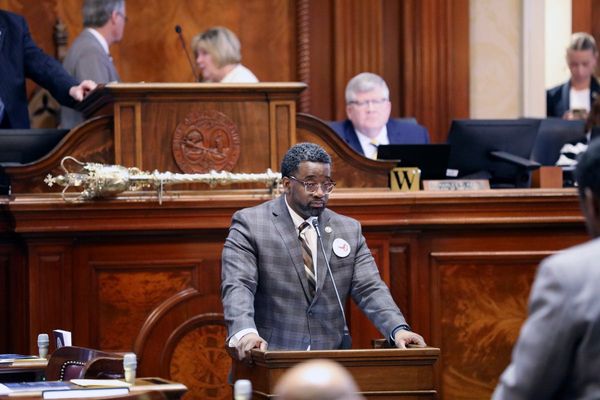
The Sam Yan and Suan Luang areas -- charming districts in the heart of Bangkok -- are filled with delicious Asian food and the Chinese-Thai way of life. Over the years, each identity and element of the cultures in this community have been passed on to the new generation.
Hence, the Faculty of Fine and Applied Arts, Chulalongkorn University has turned these cultural areas into an international art and innovation district titled "Chula Art Park" to promote local business and tourism, including sustainable quality of life.
"Today, we have to accept the fact that the digital world disrupts our life and our university. We have seen NFTs and cryptocurrency make a splash in the art world. Therefore, we have to look to the future and how we can bring art to the local community and how we can create value in artwork," said Bundhit Eua-arporn, president of Chulalongkorn University.
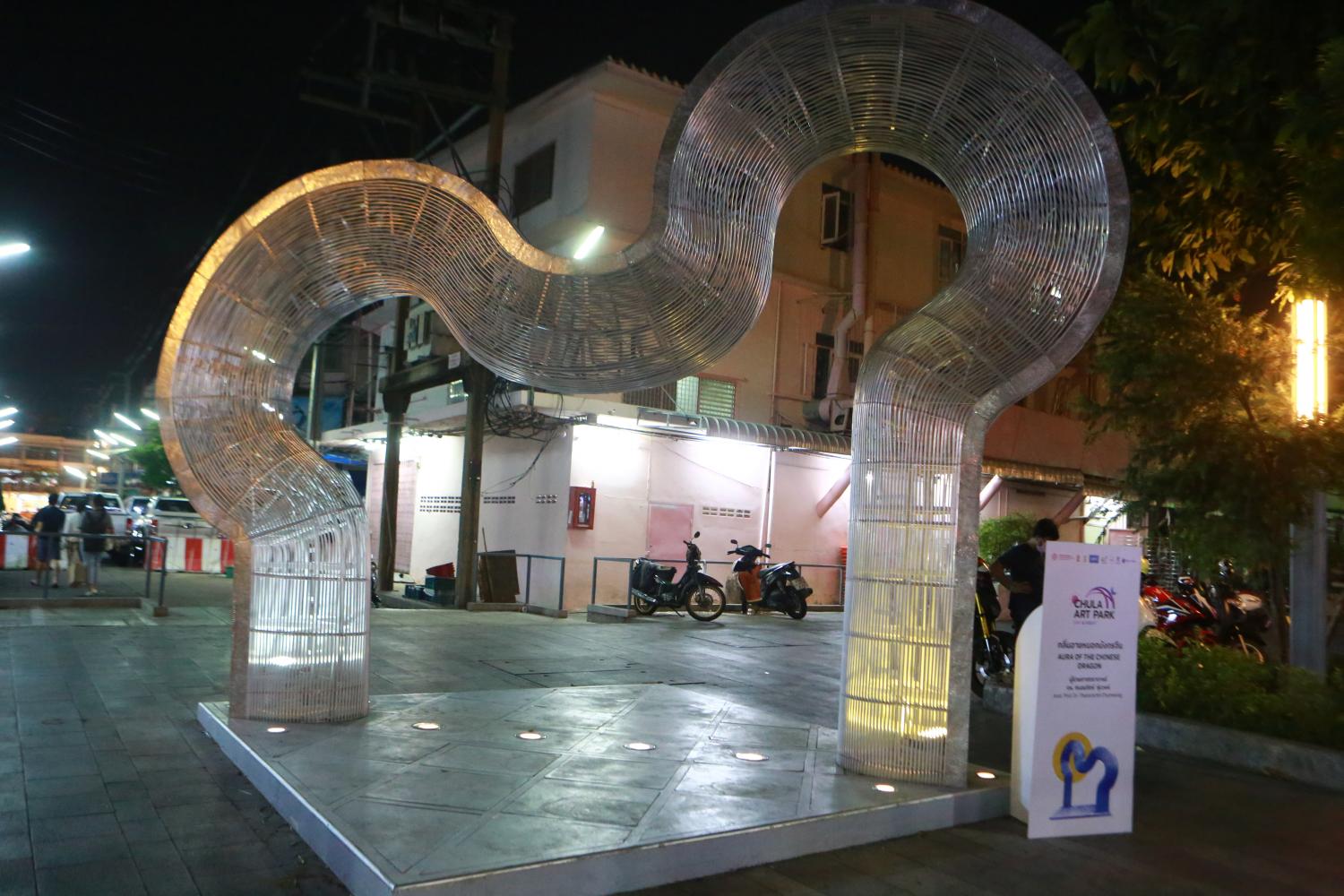
"Now is a good time to introduce digital art to the local community in Suan Luang Square and the Sam Yan area. This way, digital art is providing a way to boost the economy, generate income and allow people to do activities together. Besides the economy, I think it is important to help people in the community bond and appreciate artwork because art makes the heart tender. Their kindness will strengthen the Suan Luang and Sam Yan communities. And, this could be a good example for Bangkok."
Chula Art Park features 15 creative art installations through which visitors can immerse in culture and the tales of the past of the Sam Yan and Suan Luang districts from dusk until dawn.
Moreover, solar power plants have been installed to generate clean energy for use in these installations at night. Bussakorn Binson, chair of the Council of Arts and design dean of Thailand, further explained that the firm Blue Solar provided a renewable energy storage installation service to save on electricity costs.
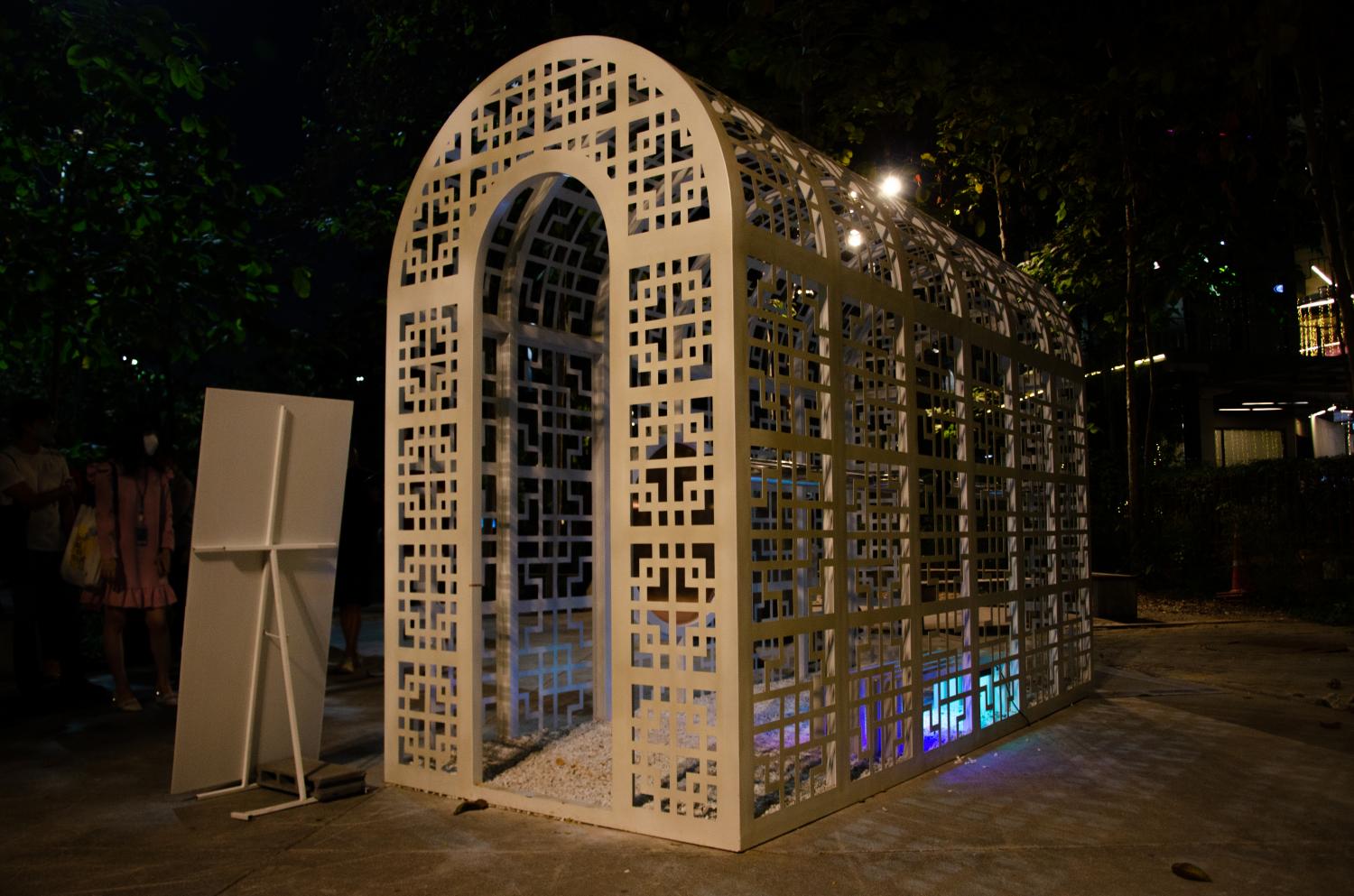
After an exquisite art experience in the digital park, viewers can indulge in luscious flavours of selected dishes from famous restaurants in the Sam Yan area.
"We already spoke with restaurants in the local community about economic empowerment through digital art," said Bussakorn.
"As this is the Chinese-Thai community, all sculptures are the Chinese symbol of prosperity and fortune, which makes locals feel warm and happy. For example, Samyan Heaven Gate is a symbol of wealth and success. If people pass through this gate, they will thrive in their jobs," she added.
In fact, the gate represents the concept of cultural integration and borders. Akaras Pornkajornkijkul, a mixed-media sculptor at King Mongkut's Institute of Technology Ladkrabang, combined two traditional styles of the architectural arches, the Khong and Paifang, to reflect Thai and Chinese people's different beliefs.
Similarly, the mixed-media sculpture of a white rabbit holding a golden lotus titled City's Lungs indicates Chinese folk religion where the lunar deity is worshipped.

Inspired by the diversity in the Sam Yan community, Ukrit Wannaprapha, a fine artist from Dhurakit Pundit University, created the rabbit in the moon to present many nations' ancient legends of a moon goddess and the golden lotus to show aesthetic appreciation and social value of the old community's culture.
Additionally, the golden flower in the rabbit's hand is regarded as an air-purifying plant in a busy, polluted city such as Bangkok since the artist would like to depict development in the city both in the old community and business hub.
Like City's Lungs, the polygonal sculpture of a giant squirrel taking a selfie is reminiscent of the natural environment on the university campus and urban life in the Sam Yan community.

Thaksina Piphitkul, an art professor at Bangkok University, explained that Reflection Of A Litte Squirrel showed the coexistence of advanced technology and beautiful nature.
"As I want to return nature to the city, I created a squirrel, which is a favourite animal of children that is often found in trees on the campus. This lovely animal signifies the richness of nature in the city. While young people now love selfies, I made this squirrel to imitate them," she pointed out.
Meanwhile, Pichai Turongkinanon, a lecturer at Chulalongkorn University's Fine and Applied Art Department, developed mixed media techniques such as metal, stainless steel and light bulbs, including an electronic control system to create a light bridge with a walkway named after the old community area of Yaek Saphan On in the university's Centenary Park.
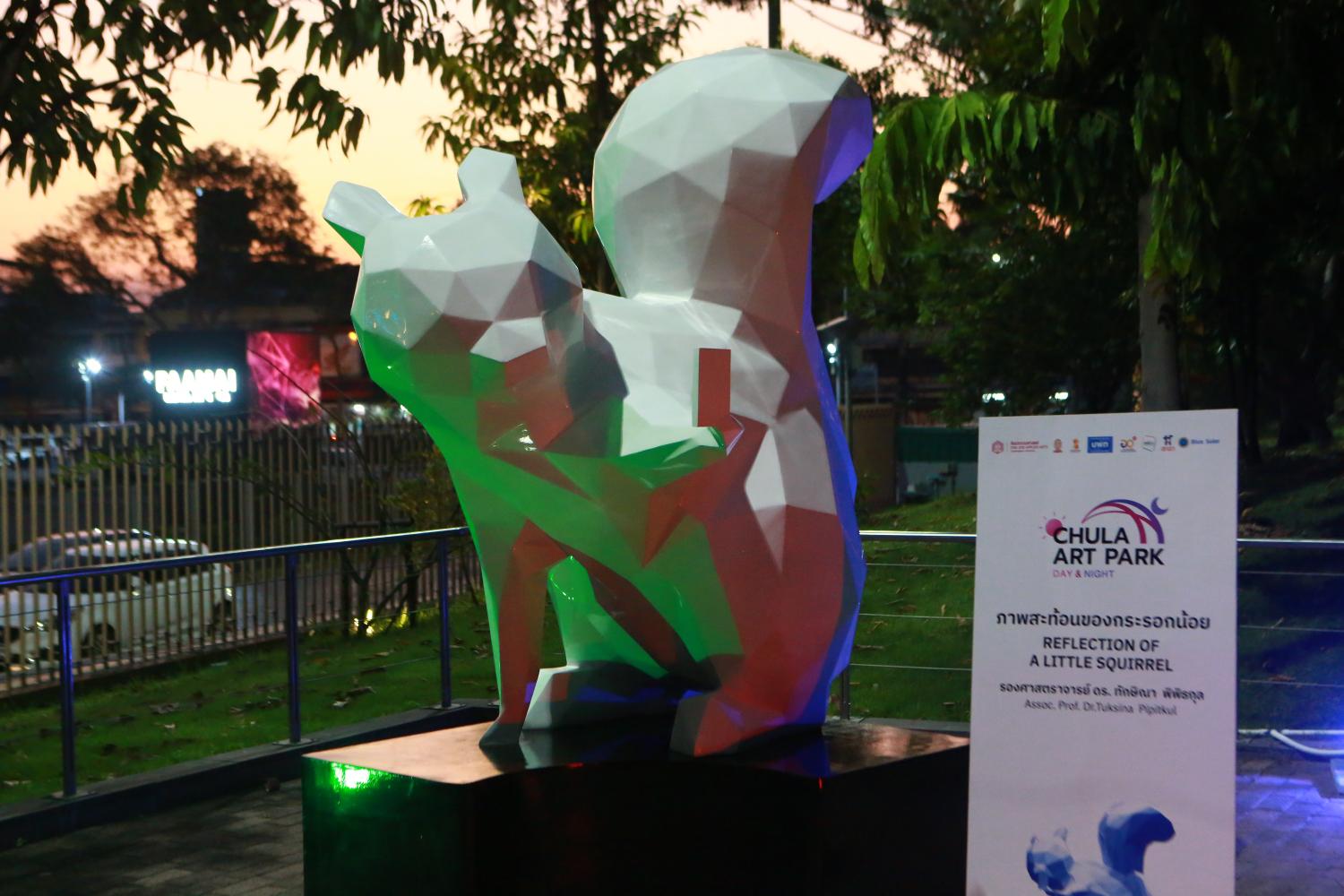
"According to old maps, Saphan On was the name of a bridge located in the Suan Luang area until it was replaced by Banthat Thong Road. So my work is a link between the past and the present. And we cross this bridge to meet new things," he said.
In the same way, Krit Ngamsom, a contemporary artist from King Mongkut's Institute of Technology Ladkrabang, applied taillights in his sculpture of a flower with three heart-shaped petals to signify dramatical changes in the old market centre, Suan Luang Xiang Kong, or Chula Xiang Kong.
Previously, the automobile spare part market was located in small areas like Talat Noi and Samphanthawong. But since it moved to Suan Luang Xiang Kong, the business is flourishing. Now, more than 200 shops selling special kinds of spare parts for vehicles are encompassed in this business district.
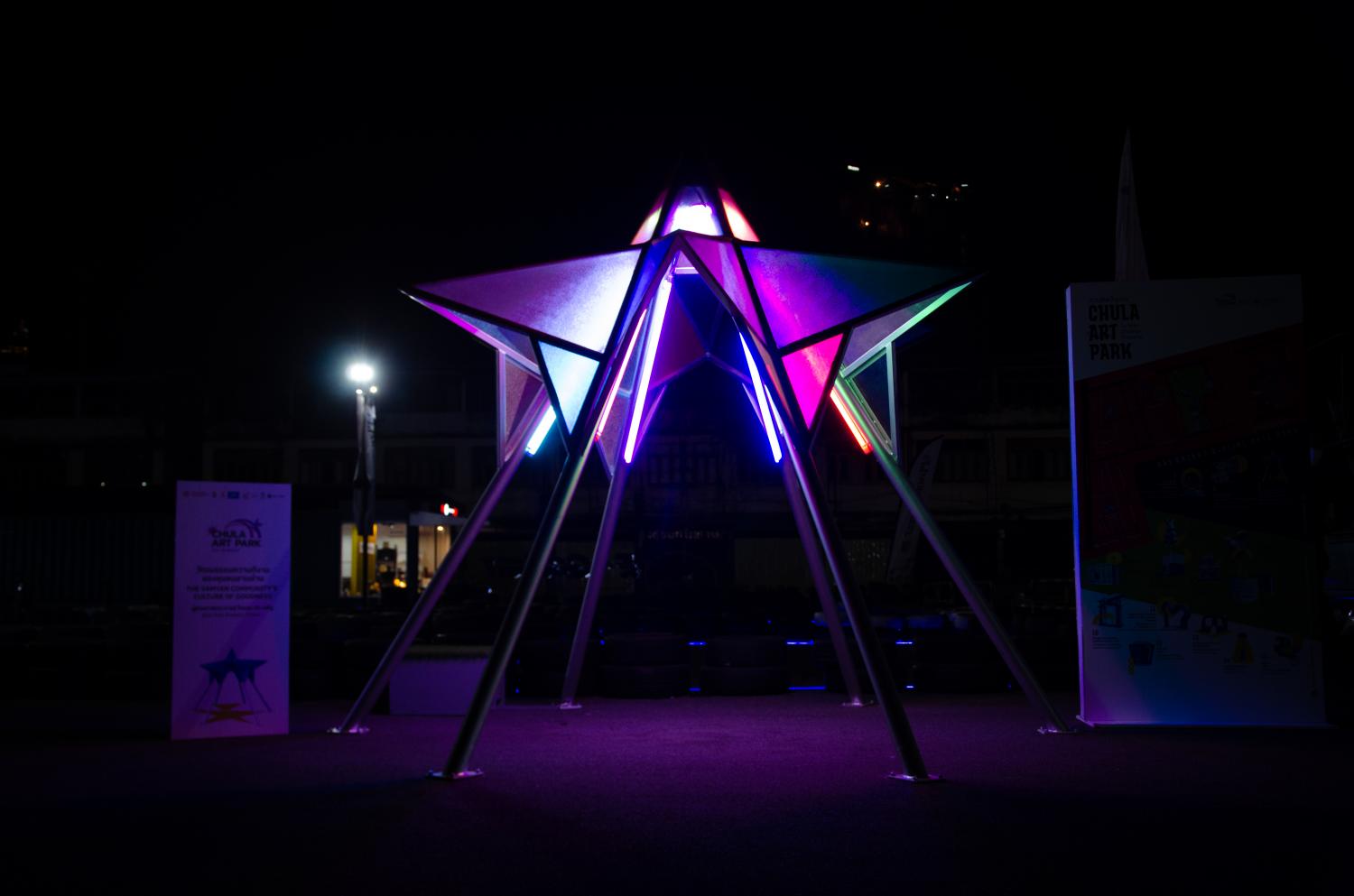
Inspired by this history, the City Center Flower's petals were made from car parts to mark the success of the business, while its flower blooming in the centre demonstrates how local people in this area have learned how to build and improve a sustainable business.
Chula Art Park is a rich source of inspiration for the next generation to gain knowledge of traditional art, gastronomy and advancements in technology.
Visit chulaartpark.art for further information.




